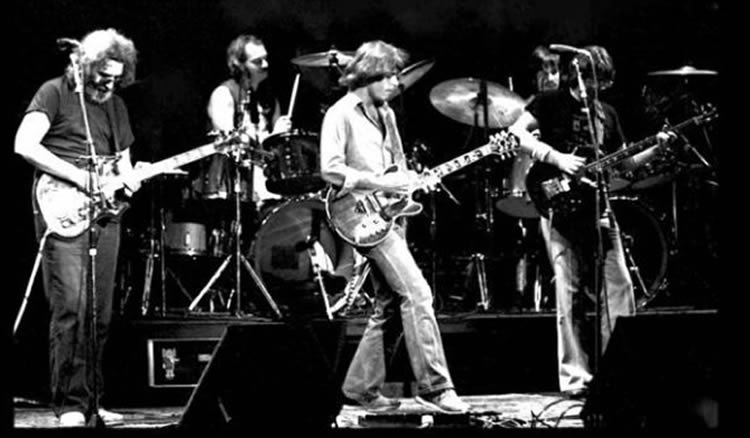
This dissertation examines the co-development of improvised rock music and live sound engineering from the mid-60s to the present. Because the rock band the Grateful Dead is the most significant example of these various issues from the time and place that form the focus of this study, as well as the most influential, they are the primary concern of this dissertation, though the work of some other related musicians and ensembles is also discussed. Yet, in spite of the exceptional nature of this stylistic hybridity, there has been comparatively little prior scholarship about the specific ways in which those involved negotiated between musical traditions previously understood by many people as irreconcilable, as well as detailed analyses of the techniques and practices used to realize such connections. Particularly underexplored in earlier scholarship on popular music from the Bay Area at this time is the way in which this type of performance practice has functioned to challenge distinctions between large categories of music, specifically those broadly categorized as popular that are defined, at least partly, in opposition to those considered “high art.” Though undoubtedly popular in terms of performance environs, audience, and many qualities of the music performed, the use of musical elements normally understood as outside the usual purview of popular music were quite common during this period in the Bay Area. Based on archival research, interviews with participants, as well as the analysis of key musical works and practices that influenced and realized such boundary crossings, it offers new insights into the role of this particular time and place in creating the more inclusive musical world of today. Kennedy Stadium, Washington, D.C.This dissertation explores the cultural conditions for the popular appreciation of “high” art, experimental, modernist and avant-garde elements, and the resulting incongruous mélange of genres, through a study of the history of such transgressions of aesthetic boundaries in the San Francisco Bay Area from 1965 to 1975. Shrine Exposition Hall, Los Angeles, CA.30 Trips Around the Sun: The Definitive Live Story 1965–1995.Family Dog at the Great Highway, San Francisco, CA 4/18/70."Blues for Allah" (Garcia, Hunter) – 21:01."Goin' Down the Road Feeling Bad" (traditional, arranged by Grateful Dead) – 7:13."The Other One" > (Weir, Kreutzmann) – 5:33."Crazy Fingers" / "Drums" > (Garcia, Hunter) – 13:08." Around and Around" ( Chuck Berry) – 5:59."Eyes of the World" / "Drums" > (Garcia, Hunter) – 14:32."It Must Have Been the Roses" (Hunter) – 5:05."The Music Never Stopped" (Weir, John Perry Barlow) – 5:29."Franklin's Tower" (Garcia, Bill Kreutzmann, Hunter) – 6:58."Help on the Way" / "Slipknot!" > ( Jerry Garcia, Robert Hunter) – 7:52.The concert also marked the first time that the then recently released album Blues for Allah was performed live in its entirety, albeit with a few other songs thrown in.



It was the first complete concert recording released commercially by the band. But it was not until the Grateful Dead released it on their eponymous record label, Grateful Dead Records, that high quality versions of the songs appeared. The concert was broadcast on FM radio, widely traded by fans on cassettes, and sold in bootleg LP versions under the titles Urubouros Deedni Mublasaron and Make Believe Ballroom. One from the Vault is a live album by the Grateful Dead, recorded on Augat the Great American Music Hall in San Francisco, California, and released Apon Grateful Dead Records, the personal record label of the band.


 0 kommentar(er)
0 kommentar(er)
